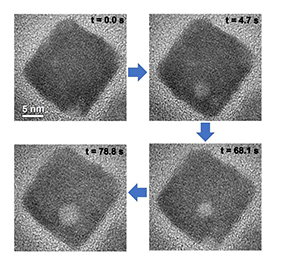Tech That Heals

Source: ASM International
Nanobots have always had a heightened presence in a variety of science fiction films. Usually, these small bots adjust and shape so that they can heal themselves, usually for the protection of someone else. From Spiderman’s suit to the Terminator, robots that repair themselves are often portrayed as these mystical devices that eliminate the need to have themselves be replaced.
However, thanks to Technion, this fictional technology of the future has come alive in the present. The Israel Institute of Technology used perovskites, which displayed a variety of properties that captivated scientists ever since their discovery in 1839, to develop “eco-friendly nanocrystal semiconductors capable of self-healing” (ScienceDaily). After these materials were damaged by radiation caused by an electric beam, they displayed the ability to repair themselves, thus leading the scientists to look for green alternatives that were lead-free. Due to their small size, the nanoparticles were able to be produced by Professor Bekenstein in his lab by heating these particles to 100°C for a few minutes.
Through this adjustment of the particles, an observable phenomenon was discovered in which holes in the nanocrystals formed on the surfaces and moved to energetically stable areas inside the particle only to eject them, causing them to return to their original condition. In simplicity, this was a clear demonstration of their self-healing properties.
With this new technology, scientists are taking steps to incorporate these nanoparticles into solar panels and a wide variety of other electronic devices.
















